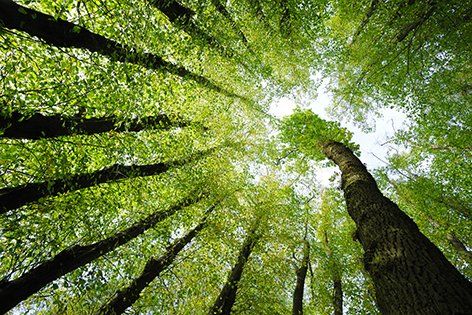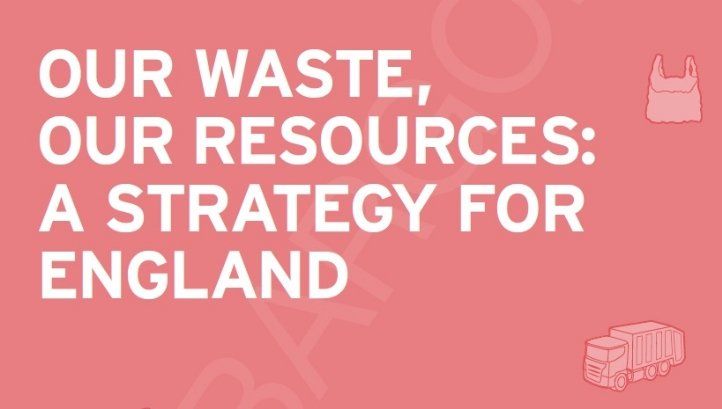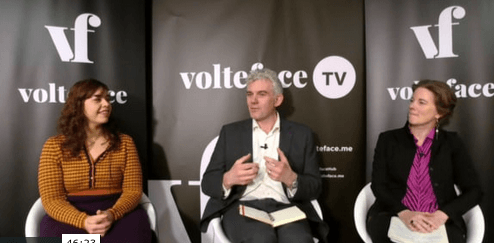
By Ruli Pennington
•
04 Jul, 2019
Dr David Greenfield asks materials designer Lucy Hughes and Richard MacCowan CEO Biomimicry UK all about design solutions that mimic the natural world. This programme is available as a podcast - listen or download here Nature's solutions often are more elegant and less wasteful of energy and resource than human solutions. ‘Biomimicry’ can offer a route to developing products, processes and structures that are less wasteful. The creative process can also start (but doesn’t have to) by using natural materials already considered to be waste. Lucy Hughes describes how her award-winning product uses the bits of fish normally discarded and algae to make a biodegradable, single use, plastic film, that can be used in wrapping food as well as for other packaging applications. The advantages are clear but as our panel points out, our systems of waste management may not be ready for such products and they could easily end up in non-compostable bin bags and routed into landfill. Reserve your seat in the studio audience for a future programme here Browse or search our archive of programmes here Browse or search our library of podcasts here

By David Greenfield
•
04 Jun, 2019
Dr David Greenfield gets Adam Woodhall, spokesperson for Extinction Rebellion and Cat Fletcher, head of media at Freegle to explain how sharing will deliver a less resource-greedy world. Fresh from April’s Extinction Rebellion protests in London, and with plenty of stories from the heart of the activity, Adam Woodhall told the CLGdotTV audience that sharing thinking about use of resources via protests sets the stage for sort of practical action that can be facilitated by organisations like Freegle. Freegle was founded in 2009 and aims to increase reuse and reduce landfill by offering a free online service where people can give away and ask for things that would otherwise be thrown away. Cat Fletcher said that the impact of Extinction Rebellion for the organisation and its 1000+ volunteers was immediate and positive. She stressed that the benefits of sharing are not just about the environment either. There is a human connection made whenever something is passed from one person to another, to become part of a different life. As Reuse Manager at Brighton and Hove City Council, Cat’s day job is equally concerned with saving stuff the council doesn’t need any more for further use - in unbelievable quantities – which, as she explains is a far better outcome than recycling, where products have to be taken apart (more use of resources) before anything can be done with them.

By David Greenfield
•
04 Jun, 2019
Dr David Greenfield draws out key aspects of the current Strategy consultation with Robert Vaughan and Linda Crichton of Defra, and Stuart Hayward-Higham of SUEZ Recyling & Recovery Our second edition of the New Circular Economy Show focused on the consultation - due to complete May 18 - on measures that will have a major impact on household waste collections. The consultations cover proposals including deposit return schemes (DRS) in which people will be paid for returning drinks containers; extended producer responsibilities (EPR) under which producers will need to produce packaging that is easier for households to recycle; and measures to encourage greater consistency in council waste collection arrangements. Issues discussed that are likely to be close to the hearts of local politicians, waste managers, local businesses and householders include: the Strategy’s ambition to raise national recycling rates from 45% to 65% by 2035; the desire for a ‘dramatic’ rise in weekly food waste collection from its current base in just 15% of councils; possible introduction of free garden waste collections; and greater consistency in what and how councils collect for recycling including the suggestion that bin colours should standardize. According to Stuart Hayward-Higham a big part of the challenge is behaviour change, since achievement of a 60% recycling rate requires ‘90% of people to do 90% of the right things 90% of the time.’ Details of future New Circular Economy Shows, presented in collaboration with Dr David Greenfield can be found on CLGdotTV’s eventbrite page (‘follow’ this page to receive alerts about future events). Author: Vicky Sargent Monday, June 3, 2019 Vicky is programme director Connected Local Government, a regular host on CLGdotTV programmes and has served public sector IT for more than 25 years

By David Greenfield
•
22 Mar, 2019
SOENECS Managing Director Dr David Greenfield, the host of the New Circular Economy Show TV welcomed Waste Network Chairs, Chair, Natasha Epstein, and designer Sophie Thomas to discuss the impact and implications of HM Governments new Resources & Waste Strategy, launched in December in 2018. As awareness grows of the environmental, even existential, consequences of our take/make/use/throw approach to resources, minds are focusing on the benefits of a ‘circular economy’ in which materials and manufactured goods are routinely recycled and re-used, and not just once. Our panel members welcome the Strategy, but don’t underestimate the massive challenges it represents, including the 65% recycling targets set for local authorities. While some councils have already made changes that will help them meet new demands, others are less well prepared. One feature of the Strategy that comes in for much discussion is the focus on the design of products and packaging. Its been suggested that up to 80% of the environmental impact of a product or its packaging is determined at design stage. And yet as our panel point out, there is at present little dialogue between designers and the waste management industry. Incentivising on the one hand manufacturers and retailers (producer pays), and on the other, consumers (deposit and return schemes), to change behaviours is discussed. So too, inevitably, is the question ‘exactly which recyclying bin does this wrapper go in?’ Waste professionals they may be but our panel ‘fess up to being as confused as the rest of us with some of the materials passing through their shopping baskets and fridges into the bins.
